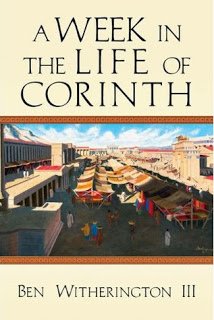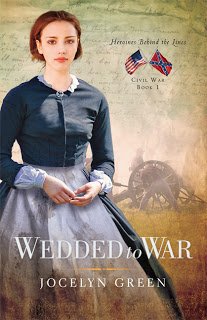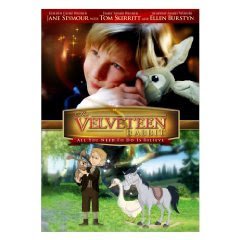
Blog & Resources
Looking for my thoughts on everything from bioethics to movies? You came to the right place. And while you’re here, check out my free downloadable resources.
Sign up to be notified when new posts release.
On Narratives and Central Propositions
Someone asked me this question recently: "Do authors (of classic literature, broadly, and the Bible, specifically) have an agenda/thesis/big idea/etc. in mind before/when they write? Or do they start writing and let an agenda emerge?"
And I said I think it depends on the genre.
If someone picked up a modern hymn book and tried to find a thesis, they’d be hard pressed to do so. Yet they would find a certain organization. I think the same is true with the Psalms. The psalms are a collection. Same with Proverbs. People look for outlines and central ideas on those books and…nada. That may even be the case with Song of Songs. For sure I think those who see a beginning-middle-end structure to Song of Solomon are pressing a later Greek storytelling structure on a 10th-century-BC book that was more likely chiastic if there is actually even a story to it.
I think the apostle Paul did have an organization in mind with the Book of Ephesians. In that book we see such a clear difference between the first half and the second. There's almost no application in the beginning; but it flips and then there's almost no theory at the end. Rather, application (second half) seems to flow from theory (first half).
The Book of Job seems to answer whether there is a clear cause/effect relationship between sin and suffering. (Often not.) But the work addresses a whole lot of other stuff too. Who knows how mountain goats calve? Who names the stars? Who keeps the ocean within its border? Whether the author set out to demonstrate that God is beyond us or whether he wanted to demonstrate how stupid our arguments can be when we accuse the suffering, there does seem to be an argument going, but not a sole argument.
Luke seems really into the insider/outsider emphasis, preparing his readers starting with Gentile women in Jesus's genealogy to accept that the Gentiles are “in.” Then he tells us about Jesus's encounter with the Syrophoenician woman. And the Roman centurion. He emphasizes believing Gentiles in a way we don’t see in other Gospel writers. But I’m not sure that means he set out only to do that when he puts together his history for Theophilus.
I think in Genesis, we’ve missed the boat by going with an "Abraham - Isaac - Jacob - Joseph" outline. If we replaced Joseph with Judah, we’d see that the author following the Messianic line from Genesis 3, and we’d no longer view Tamar’s story as a weird interruption to the Joseph narrative. Instead, that story serves as a pivot point between Judah selling a brother and Judah offering his life for a brother. Wow. Something has changed! This Gentile woman ("outsider") who was not supposed to give a rip about the Messianic line apparently values it more than he ("insider") does. He is ready to do an honor killing when she is actually the righteous one and he is the one deserving death. And in a O'Connor-misfit-like moment, Judah sees himself. Joseph's story then fits how God is preserving that Messianic line, but the focus is on the line. So yeah, I think Moses was going somewhere and not just telling a general history of humanity and then switching to follow Jacob’s family. From the beginning he seems to be tracing God's hand as he keeps his promise to save humanity through the seed of the woman.
Some classic texts have a concept. Tale of Two Cities…tells the story of a substitutionary death for love. But that does not mean every chapter has that idea.
Even J. K. Rowling said early on that she was a member of the Church of Scotland, and that if people knew that about her, they might figure out where her series was “going.” But not every chapter has a central idea/thesis.
Many writers also sit down with some characters in mind, and they don’t know where the story will take them. I didn’t write my novels with a central idea in mind. I wanted to “explore” some “themes.” Most stories are wrecked with too much of a didactic thrust.
I do think we do something bad to great texts when we dissect them to find only the ONE thing. When we re-read the Bible in different seasons, different truths jump out. Okay, I do think it’s doing violence to the text to make the stones in the Goliath story = faith, hope, and love or something that has nothing to do with the actual story. Or to make the story of Lydia only a treatise on women in the business world—which is not how her story functions at all in the Book of Acts. But still, I might identify with the Prodigal’s older brother in one season and with the father in another. And with the prodigal himself in yet another. Jesus told that story to tell listeners something about God and grace, but he also did it in the presence of Pharisees. So the point of view we bring to a story might give us a different take-away from what someone else takes, or even what we ourselves take away in a different season. That is part of the beauty of story.
The beauty of a “Who is my neighbor, Good Samaritan” narrative is that it does way more than provide a dictionary definition of "neighbor." If Jesus was so set on the one thing, a Webster’s definition would have done a better job of closing the gap of potential for “missing IT.”
What do you think? How would you have answered?
Lessons for Filmmakers
Tired of cheesy Christian family films? Here's a great summary of what does and does not work in the faith-revealing storytelling process.
Leo: Kenyan Film Comes to U.S.
The Kenyan Film "Leo" is coming to Dallas's Studio Movie Grill at 75 and Royal Lane on March 20 at 7:30 p.m. Tickets are $10.50. You can reserve in advance.
The film, starring our U.S. kid-friend Conor Lyons, released last year in East Africa, and now its young Kenyan director, Jinna Mutune, hopes to get some traction in the U.S. Join us?
A Week in the Life of Corinth
The total effect is the mirror of what happens when fictionwriters don’t know about biblical backgrounds, so they write the Esther storyas a romance. Here a biblical scholar has not mastered the art of writtenstorytelling. And we need both excellent storytelling and good background expertise.(Ben-Hur is an example of a work thatweds the two fields in a way that gives readers a story for the ages.)
 |
| Paul would have been familiar with the "bema" or judgment seat in Corinth. |
Chip MacGregor: Message Fiction vs. Values Fiction
Today we hear from my agent, Chip MacGregor.
Someone sent me this question: “I’m a writer who hasn’t been able to find success in the traditional CBA markets. I was told my book is ‘too message oriented for most Christian publishers.’ One house told me they want ‘values fiction, not message fiction.’ Is this a real trend? What is values fiction? How does it differ from message fiction?”
It’s a real trend. “Message fiction” is a story that gets weighed down by the author trying to deliver some sort of obvious, heavy-handed message. An example? Christian writers who want to send me their novel about the naughty fifteen-year-old girl who fools around, gets pregnant, then has to show me her struggle about whether to get an abortion or not, complete with angst and tears while the author hammers me with the message that “Abortion Is Bad.” Way too heavy handed, and I see it frequenlty.
Look… I’m pro-life. But the author in that situation isn’t really trying to tell me a story—she’s trying to present me with a Major Life Message. And that’s boring. Who buys fiction to be preached life messages? Nobody. Pro-choice people won’t touch the book, and pro-life people don’t need to read it because they’re already convinced. If I want political messages, I’ll turn on MSNBC or Fox News (depending on your political leanings). If I feel a need for entertaining liberal messages, I’ll listen to NPR. But I buy a novel for the STORY. (And this isn’t limited to abortion books—there’s also the “We’re Destroying The Planet” books, the “Capitalism Is Evil” books, the “Obama Is The AntiChrist” books, and the “You Need To Fall On Your Knees And Accept Jesus Because You’re Going To Hell” books. They are all boring. Nobody wants them. And they don’t work. So if you’re writing a book to share a message like that, publishers are probably going to ignore you.)
 “Values fiction” is a story that reveals inherent beliefs within the context of the novel. Your values as an author are evident in the words you put on the page. Take Huckleberry Finn as an example. There are some solid American values in that text—including some that were a bit shocking to readers of that period. Mark Twain had his protagonist decide to support a runaway slave, a black man, even though Huck believed it meant he was going to go to hell for doing so. Let me tell you, that opened some eyes in Twain’s day. But nobody would argue Huckleberry Finn is a “message” novel. It’s not a book with the Major Life Message that “White People Need To Be More Fair To Blacks.” It’s a story about a runaway kid and the adventures he gets into… but within the context of the story, Twain reveals some great values about race and freedom and how we should all treat each other. You see the difference?
“Values fiction” is a story that reveals inherent beliefs within the context of the novel. Your values as an author are evident in the words you put on the page. Take Huckleberry Finn as an example. There are some solid American values in that text—including some that were a bit shocking to readers of that period. Mark Twain had his protagonist decide to support a runaway slave, a black man, even though Huck believed it meant he was going to go to hell for doing so. Let me tell you, that opened some eyes in Twain’s day. But nobody would argue Huckleberry Finn is a “message” novel. It’s not a book with the Major Life Message that “White People Need To Be More Fair To Blacks.” It’s a story about a runaway kid and the adventures he gets into… but within the context of the story, Twain reveals some great values about race and freedom and how we should all treat each other. You see the difference?
Or have a look at a contemporary literary novelist—let’s take Lisa Samson as an example. Her books reveal some strong values—that there are different ways we can live out our faith. That we need to be accepting of other people in the church, including those who are different from us, those who are in pain, those of another race or socio-economic status, and those who are gay. She never comes out and holds up a sign that reads, “You need to embrace the poor or you’re a bigot.” Instead, she just tells a good story, with values, that reveals her worldview. Good values fiction does that without screaming or condemning or pointing to too-obvious references. It respects the reader to have enough brains to figure out what the values are inherent in the story.
So if you set out to write a novel that will help people understand some Important Life Message, you’re probably starting off on the wrong foot. Instead, tell a good story. Let your characters and story reveal what you believe to be true. Entertain people along the way. That’s how you influence lives anyway.
Wedded to War: A New Civil War Historical Novel
 The passion to tell the story of how hard women worked to beable to contribute to their country through nursing. The women who inspired mystory were refined ladies of leisure, and they gave up all their comforts toendure hardships and harassment as the first women nurses in our nation’shistory. They played a hugely significant role with the U.S. SanitaryCommission, forerunner of the American Red Cross. It’s time for their story tobe celebrated.
The passion to tell the story of how hard women worked to beable to contribute to their country through nursing. The women who inspired mystory were refined ladies of leisure, and they gave up all their comforts toendure hardships and harassment as the first women nurses in our nation’shistory. They played a hugely significant role with the U.S. SanitaryCommission, forerunner of the American Red Cross. It’s time for their story tobe celebrated.Christian Themes in Fiction
One of my students just completed an independent study with me focused on Christian themes in classic literature. I asked him if I could share with you his final analysis. And he said yes:
Christian Themes in Fiction
By Jared Binder
Creative Christians enjoy looking for new ways to express old truths. In our zeal we try Looking for God in Harry Potter, Finding God in the Lord of the Rings, and even examining The Gospel According to Dr. Seuss. Exploring Christian themes in literature is all well and good. The problem comes when we rip these themes out of their proper context. Like the child who licks the frosting off the Mini-Wheat and throws the rest away, we’re far more delighted to discuss the themes we’ve discovered than the story itself. But the message was not meant to exist apart from the story any more than the heart was meant to function apart from the body.
“The gospel itself may be made harsh by precepts void of warm narrative. In spite of the fact that the Bible is filled with parables and stories, our zeal to evangelize and to encounter secular cultures with moral reform has shackled evangelicals to deadening presuppositions. The presuppositions do not kill because they are false (they are indeed true) but because they strip away mystery and process — the very ingredients of a good story.”[i] I like Calvin Miller’s idea here of mystery and process. A good story does not simply provide us with a cold precept — do not commit adultery. A story gives us a world to explore an idea in, room to experience its mystery, and time to process it. Good stories show far more than they tell. They provide us with an experience of truth. We don’t read about grace in The Idiot; we have an encounter with it in the person of Prince Myshkin.
Many Christian writers write their books in reverse. By that I mean that the writer will think of a theme or truth which he or she wants to communicate. Then the writer will craft a story based on that theme. The characters, plot, and setting, all exist to allow the writer to communicate the agenda. This method has things backwards. The message should not give birth to the story. The story gives birth to the message.[ii] C.S. Lewis explains how he wrote The Lion, the Witch, and the Wardrobe.
“Some people seem to think I began by asking myself how I could say something about Christianity to children …. I couldn’t write in that way at all. Everything began with images; a faun carrying an umbrella, a queen on a sledge, a magnificent lion. At first there wasn’t even anything Christian about them; that element pushed in of its own accord.”[iii] One reason, among others, I believe The Shack will fail to become a classic is because it feels as though the writer had an agenda in mind and then set out to create a story around it.
So what makes books such as The Scarlet Letter, Anna Karenina, The Idiot, The Divine Comedy, Gilead, Till We Have Faces, and A Tale of Two Cities so good? What makes a book a classic? First, as we’ve discussed, the authors have made the story primary and the message/theme secondary in each of these novels. They show us the truth rather than beating us over the head with it. Second, all of the authors display a mastery of the craft of writing in their work. Poorly written novels rarely hang around very long. Like a new penny in a dung heap, the best of messages will not shine out of shoddy prose.
Third, these authors displayed an unusual degree of psychological insight and produced vibrant, believable, enduring characters. Because of this we can see ourselves or people we know in their characters. This helps to produce a bond between the reader, the book, and its characters.
Fourth, these novels possess universal elements which transcend their time and culture. They still have the power to speak to us and resonate with us today.[iv]
Fifth, and finally, these writers, as Shakespeare said, spoke what they felt not what they ought to say. That is, they were honest. They described life as they saw it not as they would have liked it to be.[v]
_______
[i] Calvin Miller, “Hope in a Doubtful Age” in More than Words, (Grand Rapids: Baker Books, 2002) 258.
[ii] Penelope J. Stokes says, “One of the greatest temptations for Christian writers is to have a preconceived idea of what great spiritual truths our readers should glean from the work. We desperately want them to understand, and so we set up neon road markers to point the way to the religious ‘themes’ of the novel. ‘Get it?’ we shout. ‘This is the way a Christian is supposed to live!'
"But the purpose of fiction is not to teach a lesson, preach a sermon, convey the message of salvation or set up guidelines for Christlike living. The purpose of fiction is to tell a story. The purpose of reading fiction is to be immersed in the lives and experiences of the characters. Any spiritual insights that take place in the reader happen subliminally, not overtly.”
Penelope J. Stokes, The Complete Guide to Writing and Selling the Christian Novel, (Cincinnati: Writers Digest Books, 1998) 82.
[iii] Lyle W. Dorsett and Marjorie Lamp Mead, eds. C.S. Lewis Letters to Children, (New York: Simon and Schuster, 1985) 6.
[iv] This is by no means a comprehensive or exhaustive list of what makes a book a classic. It merely shows several key elements.
[v] Philip Yancey says, “When I began writing openly about my faith, I concluded that I had only one thing to offer: honesty. I had heard enough church propaganda growing up. I would cling to the stance of a pilgrim, not a propagandist, describing life with God as it actually plays out, not as it is supposed to play out. Philip Yancey, Soul Survivor, (New York: Doubleday, 2001) p.270.
She's Done It Again
Heather Goodman returns for a second three-minute interview with me about the intersection of art and faith. In today's offering I explore why we need story, not just propositional truth.
You can view the previous one here.
Watching the Son Rise
I love the original classic by Marjorie Williams and the theme that “love makes us real.” I knew I didn’t want to adapt it, taking a based-on approach—for one, it had been done as a short animated film. Second, I thought Williams created perfection. So my approach is an “inspired-by” one. I didn’t want to make an animated film. I wanted to tell the story from the boy’s point of view. The boy is mentioned in Williams’s story—it’s his toy, and I thought we needed to give him life.
This time I had to exercise a lot of patience. It took more than three years to get the animation completed. We shot the live action first, and once it was finished, the animation started. I laid out in the screenplay what I felt the story should be, but then I let the animation direction take over. And I waited.
Some of your more recent films— Saving Sarah Cain, The Last Sin Eater and now The Velveteen Rabbit —represent a change from the pioneer setting. Is that on purpose?
I wouldn’t want to do only pioneer films. But it’s not “on purpose.” It’s all about the story for me. Still, a “period” film allows me to tell a story without having to worry about having a so-called edge. For example, from a language standpoint, young people believe more easily in the world of the past where there’s no cursing. It’s hard for contemporary teens to believe the world otherwise.
What do you look for when choosing a film to produce?
There’s the practical sense of telling a story and also weighing the chance of it being made. Story is definitely number one. There’s the viability of what I bring to the table as a storyteller. But also I have to be realistic about where my career is and what I can get made. I had to convince somebody to spend a million dollars on ninety pages of work.
It may sound clichéd, but Stephen Spielberg is definitely at the top. I don’t think there’s a more versatile storyteller—someone who can go from ET to Schindler’s List and do it all well. He’s a master—and at more than just visuals. He’s the whole package.
Use metaphors. Allegory. You do try not to just hit spiritual things right on the nose. That’s why you go to church. But even a good preacher tells stories. Jesus told stories. Otherwise, you only speak to the person’s mind and not his or her heart. Good story telling does both.



